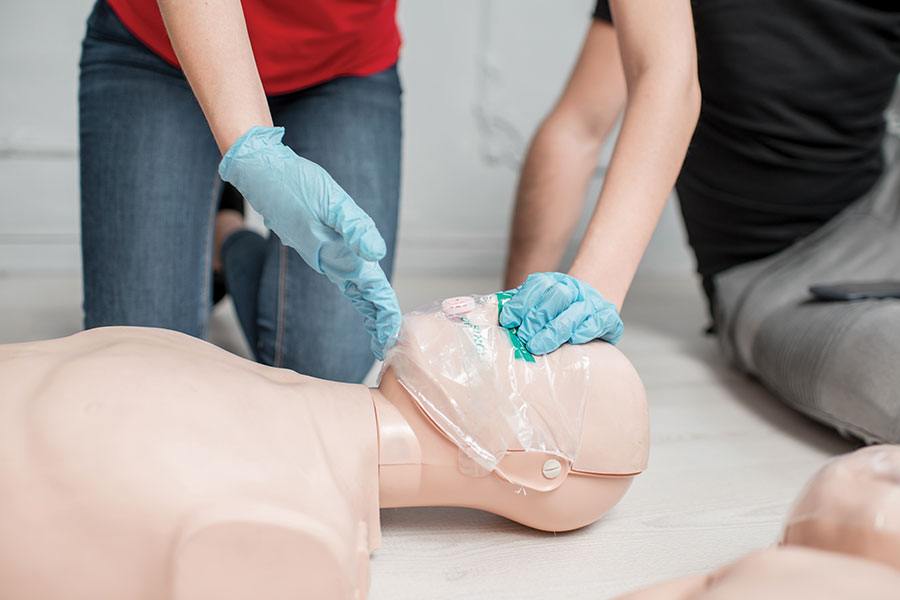The 30-Minute Class That Could Save Lives

Photo credit: Getty Images
“It was another day at school,” says Megan Lello, senior communications officer for the Philadelphia School District. Teachers and students should have been getting ready for the holidays, but the day was instead thrown into chaos when a student went into cardiac arrest.
The school’s athletic director and the school nurse, trained in CPR and the use of an automatic external defibrillator, rushed to resuscitate the student. One staff member began performing compressions, while the other found the school’s AED (automated external defibrillator).
“His life was saved by the AED machine,” says Jimmy Lynch, executive director of athletics for the district. For Lynch, the incident affirms the importance of CPR and AED training just as the school district expands its CPR and AED education with support from the American Heart Association, joining a nation-wide push by activists, legislators and health organizations to make the training a fixture of public education.
The Philly student was one of the lucky ones. The chances of surviving cardiac arrest are one in 10 if you’re not in a hospital. Those odds increase to 45 percent with CPR, but less than half of cardiac arrest cases receive bystander CPR, a problem many researchers say stems from a lack of training.
The issue intensifies in Philadelphia, where cardiac arrest ends 1,100 lives each year. Only 6.1 percent of Philadelphians survived cardiac arrest outside of a hospital in 2015, and only 14.4 percent received CPR, compared to about 40 percent nationally. Those numbers get even more dire in some neighborhoods. The odds of receiving CPR decrease in majority African-American, Latino and low-income neighborhoods by as much as 50 percent, according to a study published in the New England Journal of Medicine. The report identified economic barriers to training as the primary reason for the gap.
“Hundreds of kids have dropped in our schools and thousands of people have dropped elsewhere in the community and died because no one knew what to do,” says Stephanie Austin, a cardiac arrest survivor and advocate of CPR training in schools. “We can have this whole generation in our community empowered to save a life just by taking a 30-minute class.”
Thirty-eight states have enacted legislation to this end. In Pennsylvania, a bill recently passed by the state Senate would do the same, but the House has yet to approve it. State Representative Stephen Barrar, who sponsored the most recent CPR training bill, says finances are keeping some would-be supporters from backing the bill.
“Here’s the biggest obstacle we have: The school districts and school directors are very hesitant to embrace anything that mandates curriculum or anything that will cost additional dollars in their school districts,” says Barrar.
The bill’s passage is not the only hurdle for in-school training. A review published in the Journal of the American College of Cardiology found that, in states that required the training, only 77 percent of schools surveyed actually provided it. Of those that did provide it, only 63 percent provided education on AEDs, and some states did not require a certified instructor. The study also attributed the problem in part to a lack of funding.
These issues will not be solved by the legislation under consideration in PA. The Senate bill and the recent House bill don’t require instructor certification or specify a means of funding or enforcement, so schools without the means to purchase a kit or training materials will have to rely on support from nonprofit organizations such as the American Heart Association. Although Barrar acknowledges the bill could use improvement, he maintains that this nonprofit support will be sufficient.
The district has looked to outside support to maintain their AED devices and expand AED and CPR training across schools. The American Heart Association, which supports the current PA House bill, has responded with 62 CPR training kits that provide training manikins, AED simulators and instructional guides.
“It’s really a one-stop shop for CPR hands-only training.” says Lynch. “We’ll be distributing them out to our schools to begin programs in our health and physical education classes.”
With one kit per school, however, the donations will not meet the demands of the proposed legislation.
“If the legislation is passed, we’ll have to come up with something that’s more consistent,” Lynch says. “Finances are always going to be an obstacle when you’re dealing with a district of our size and the lack of resources that a lot of our schools have.”
The district hopes to continue its partnership with the American Heart Association, who in turn has called for donations to provide more resources. Lynch says the district, as it develops its program, could lead the way for districts across the country. For now, however, they’re focused on saving lives here in Philadelphia.
“I’d be more than happy to have Philadelphia serve as a model,” Lynch says. “But it will also help the people we serve, which is our students, our staff and the larger community.”
Did you know?
45% Increased chance of surviving cardiac arrest with CPR
1,100 Philadelphians die from cardiac arrest each year
64% of Americans report never having seen an AED
100k+ lives could be saved each year
For more information on ways you can Go Red this year, visit phillymag.com/gored.
This is a paid partnership between Go Red For Women and Philadelphia Magazine
